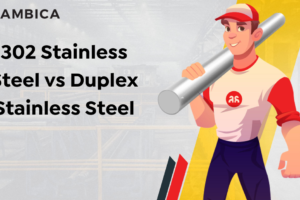The phenomenal nature of stainless steel is electrifying. The stipulation of stainless steel is whopping internationally. Industries utilizing stainless steel are unimaginable and its applications are reality.
Stainless steel has various grades and types. It is compounded more than 200 grades. The austenitic stainless steel denotes 300 series. Austenitic stainless steel has superior corrosion resistance with remarkable strength.
Grade 304 stainless steel and 310 are known for peculiar properties and uses. Grade 304 is the commercially sound grade, whereas grade 310 is acknowledged for heat resistance properties.
Grade 304
Grade 304 is 18/8 stainless steel because it is composed of 18% chromium and 8% nickel. Its characteristics are versatile and applications are numerous. Grade 304 has impressive forming and welding characters and can be deep drawn, roll-formed. Its various characters allocate manufacturing in the field of industrial, food, and architecture, etc.
Grade 310
Grade 310 is high chromium-nickel austenitic stainless steel. It is mainly used for high-temperature applications. Grade 310 exhibits excellent oxidation and corrosion resistance at high temperatures. It is also used in cryogenic applications and retains toughness at -268°C. Grade 310 has low magnetic permeability.
Difference between Grade 304 and Grade 310
Grade 304 and 310, both are austenitic stainless steel with similarities and disparities. It is important to distinguish because the selection of the right grade will lead to an effective operation in industries.
Chemical composition
Chemical makeup decides and distinguishes the physical and mechanical properties of stainless steel grades. Grade 310 has a concentration for chromium and nickel with carbon.
| Grade | Carbon
(max) |
Chromium | Nickel | Phosphorous
(max) |
Sulfur
(max) |
Manganese(max) | Silicon
(max) |
| 304 | 0.08 | 18-20 | 8.0 | 0.045 | 0.030 | 2.0 | 0.75 |
| 310 | 0.25 | 24-26 | 19-22 | 0.045 | 0.030 | 2.0 | 1.50 |
Grade 310 offers superior corrosion resistance to grade 304, as grade 310 contains higher chromium and nickel.
Grade 310 has more hardness than grade 304.
Heat resistance
Grade 310 has good oxidation resistance up to 1050°C and 1035°C in continuous and intermittent operations respectively. On the other hand, Grade 304 has also offered oxidation resistance up to 925°C and 870°C in continuous and intermittent operations respectively.
In the comparison zone, grade 310 has higher oxidation resistance than grade 304.
Applications
Grade 310 has applications in heat treatment operations and components, similar to parts of the furnace, kilns, steam boilers, tube hangers for petroleum refining, thermal wells, cryogenic components, ore processing plants, and food processing, etc.
Whereas, grade 304 is widely used in food processing equipment, kitchen equipment and appliances, water filtrations, fasteners, and architectural paneling, etc.
Ambica steels is the leading exporter of stainless steel grades in international business. Our facility is equipped with the latest pieces of machinery and tools. We have developed a network of sales and research teams for product and project enquire. Consultations are always considered.



